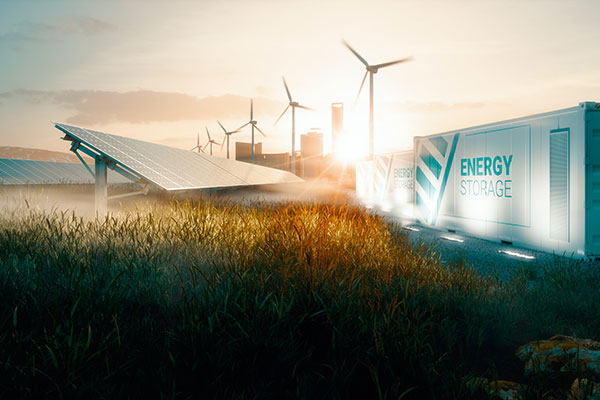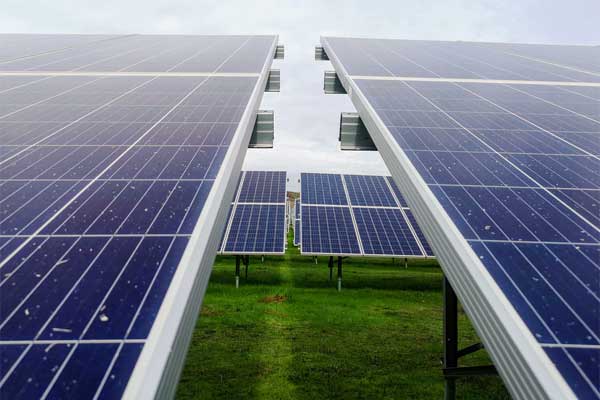- Climate change has worsened, but across the globe, there are promising signs of real decarbonization, according to UC San Diego researchers.
- The glimmers of hope for decarbonization will be critical for diplomats at COP26, who may be set for disappointment as they begin an official "stocktaking" process of reviewing past emissions.
- This year, each country will report on emissions accounting for the last five years and issue new, bolder pledges to cut greenhouse gasses.
At the upcoming Conference of the Parties (COP26) in November, ample discussion is likely to focus on how the world is not on track to meet the Paris Agreement’s goals of stopping warming at well below 2°C. According to a new University of California San Diego article published in Nature Energy, world diplomats will, however, find encouraging signs in emerging clean energy technology “niches” — countries, states or corporations — that are pioneering decarbonization.
“In certain areas, adoption rates for solar and wind turbines, as well as electric vehicles are very high and increasing every year,” write the authors of the opinion piece Ryan Hanna, assistant research scientist at UC San Diego’s Center for Energy Research and David G. Victor, professor of industrial innovation at UC San Diego’s School of Global Policy and Strategy. “It’s important to look to niches because this is where the real leg work of decarbonization is happening. In fact, one can think about the entire challenge of decarbonizing as one of opening and growing niches — for new technologies, policies and practices, which are all needed to address the climate crisis.”
The glimmers of hope for decarbonization will be critical for diplomats at COP26, who may be set for disappointment as they begin an official “stocktaking” process of reviewing past emissions. This year, each country will report on emissions accounting for the last five years and issue new, bolder pledges to cut greenhouse gasses.
Prior to the COVID-19 pandemic, global fossil fuel emissions had been rising at about one percent per year over the previous decade. Over that same time, U.S. fossil fuel emissions fell by about one percent per year; however, that slight dip is nowhere near the decline written into the U.S.’s original pledge to the Paris Agreement.
“The abundant talk in recent years about ‘the energy transition’ has barely nudged dependence on conventional fossil fuels, nor has it much altered the trajectory of CO2 emissions or put the world on track to meet Paris goals,” write Hanna and Victor. “Instead, policymakers should measure the real engine rooms of technological change — to niche markets.”
They point to a growing number of markets where clean technology is being deployed at rates far above global and regional averages.
“Norway and California are leading on electric vehicles, Ireland on wind power and China on electric buses and new nuclear,” write Hanna and Victor.
Today’s pioneers in energy are those who are actually doing the hard work of creating low-carbon technologies and getting them out into the world. These leaders developing and trialing new technologies are typically small groups; however, they are critical to the climate change crises because they take on risk and reveal what is possible, thereby lowering the risk for global markets to follow.
For example, beginning in 2010, Germany launched a massive investment in solar photovoltaics, which pushed down costs, making photovoltaics more politically and economically viable around the globe. Hanna and Victor credit Germany’s leadership for the expansive photovoltaic market the world has today.
Still, eliminating at least one-third of global emissions will require technologies that are, at this time, prototypes. To get more clean energy technologies deployed on a global scale requires new investments in research and development (R&D), notably in novel technologies related to electric power grids.
These investments are strong in China, mixed in Europe and are lagging along with other R&D expenditures in the U.S.
“In the U.S., a new administration serious about climate change may allow for renewed pulses of spending on R&D-for example, through a prospective infrastructure bill that could gain legislative approval this autumn-as innovation is one of the few areas of energy policy bipartisan consensus,” the authors write.
The need is dire, as limiting warming to 1.5°C, per the Paris Agreement, has become increasingly out of reach. Meeting the goal now requires continuous reductions in emissions of about 6 percent annually across the whole globe.
“That is a speed and scope on par with what was delivered by global pandemic lockdowns, but previously unprecedented in history and far outside the realm of what’s practical,” write the authors.
They conclude that COP26, if handled by diplomats thinking like revolutionaries and not a diplomatic committee, is an opportunity to start taking stock of the industrial and agricultural revolutions that will be needed for decarbonization.
—-
Publication Referenced in the Article:
Ryan Hanna, David G. Victor. Marking the decarbonization revolutions. Nature Energy, 2021; DOI: 10.1038/s41560-021-00854-1











Comments